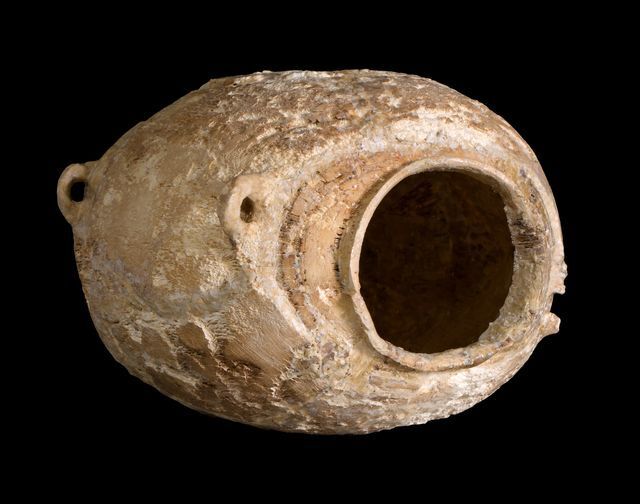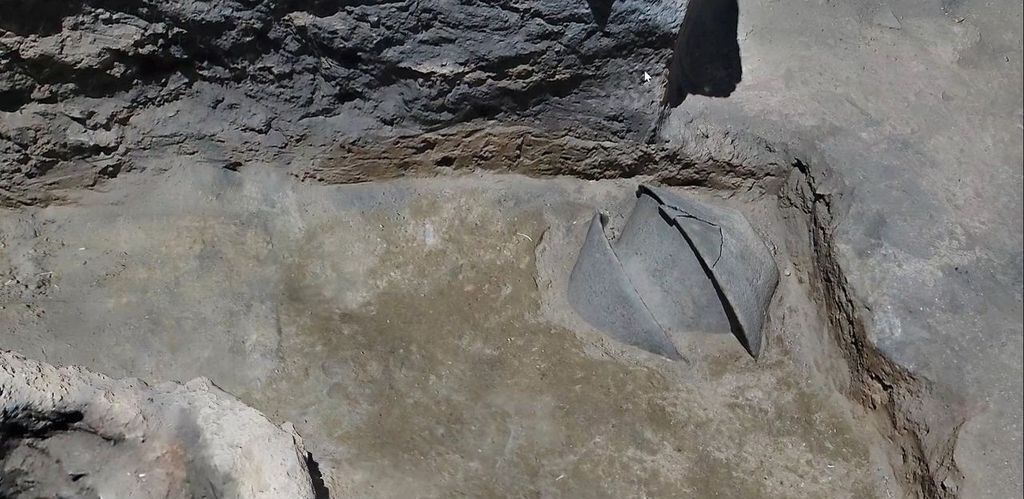It’s a running joke in archaeology: The most exciting finds are often uncovered on the very last day of excavation. It has happened to us on the Ophel, and it happened at the Israel Antiquities Authority (iaa) excavation at Horbat Raqiq (near Beer Sheva), as revealed in a press release issued today.

As Emil Aladjem was taking final measurements, he noticed the exposed edge of a basalt vessel. Further investigation revealed three large vessels arranged in such a way that two of them deliberately enclosed some kind of precious object. Delicately opening up the vessels, the archaeologists discovered the fragmented pieces of another vessel. After a complicated conservation process, this small, delicate vessel was identified as as an “amphoriskos” (a small jar) made of elephant ivory and attributed to the Chalcolithic period (a prehistoric period that ends circa 3300 b.c.e.).
This rare vessel is the first Chalcolithic-period ivory vessel found in the region. It is 20 centimeters across and features small, symmetrical handles at the neck and two more handles at the base. The ivory was apparently derived from an African elephant, the tusks of which may have been traded into the Levant.

One of the important questions about this vessel is whether it was crafted locally or brought to the region. The vessel is evidently the work of a skilled artisan, as it utilizes the tusk maximally. If it was crafted locally then it is a testament to the skill present in the region during very early periods. Researchers at Hebrew University and the University of Haifa are conducting biomolecular research on the vessel to determine a more specific origin point for the ivory based on the elephant’s diet.

“In academic circles, it is generally accepted that figurine and broken vessel deposits and burials are part of cultic ceremonial activities,” the press release described.
Dr. Ianir Milevski, former head of the iaa prehistoric branch, said: “From the manner in which the bowls were arranged, the ivory vessel, which was broken already in antiquity, was clearly interred in a deliberate fashion, which would seem to attest to the importance attributed to it.”
This recent ivory discovery will be displayed on Thursday at the annual Israel Prehistoric Society Conference.

